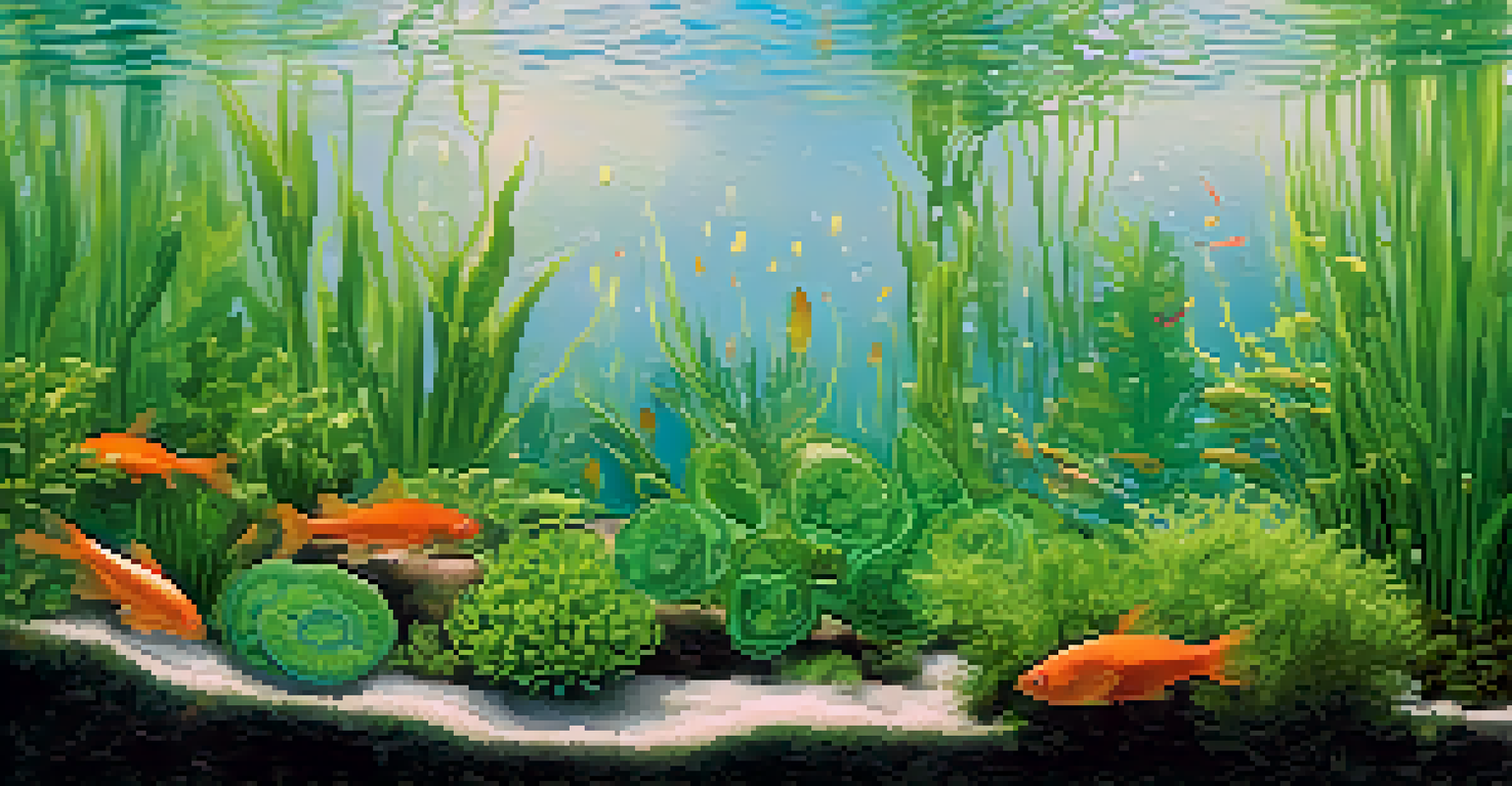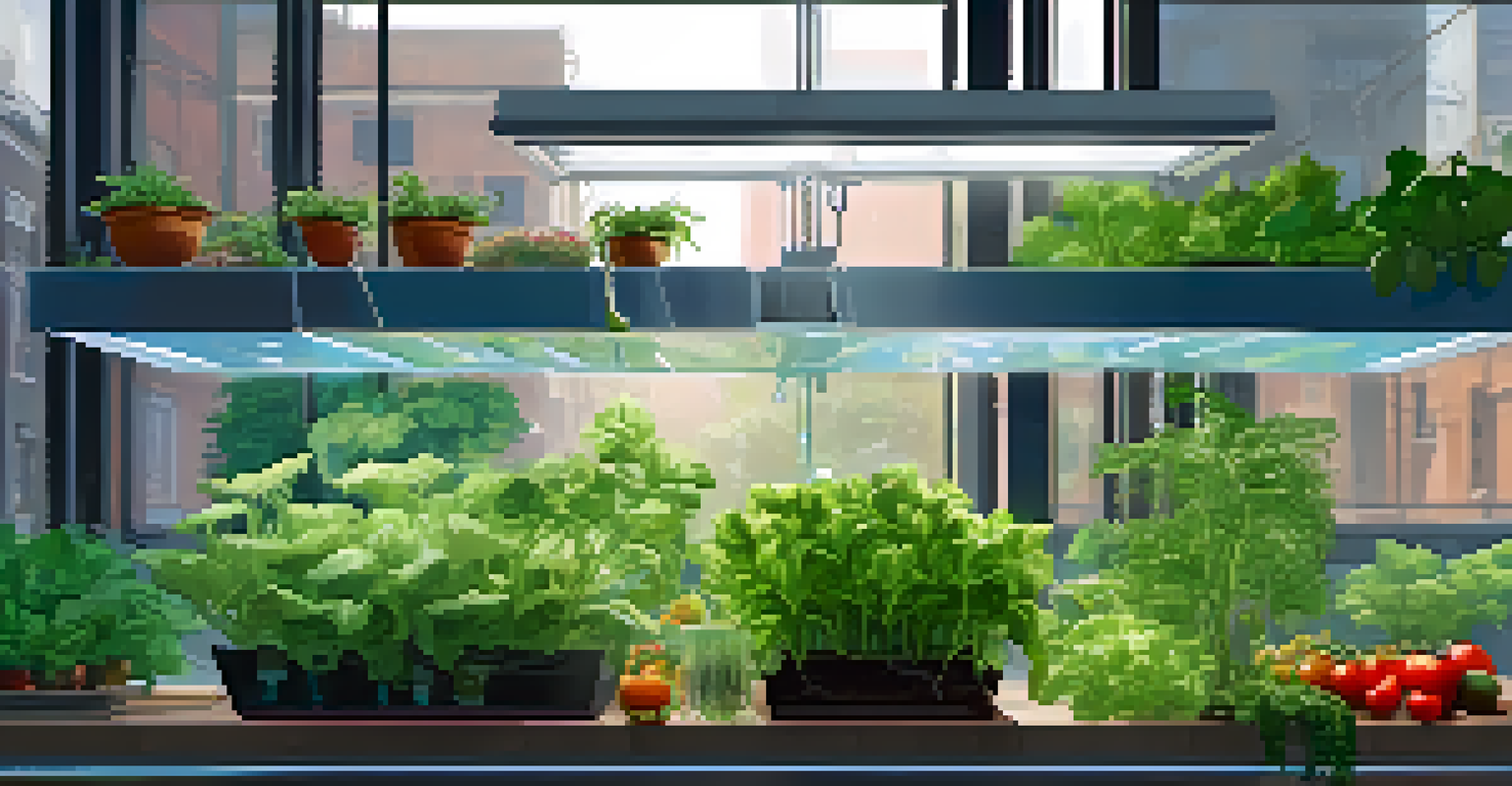The Science Behind Aquaponics: How It Really Works

What is Aquaponics and How Does It Work?
Aquaponics is a sustainable farming method that combines aquaculture and hydroponics. In simple terms, it involves raising fish and growing plants together in a symbiotic environment. The fish waste provides organic nutrients for the plants, while the plants help filter and clean the water for the fish.
Aquaponics is a revolutionary method of farming that mimics nature’s own ecosystems, creating a sustainable and efficient food production system.
This closed-loop system mimics natural ecosystems, making it an efficient way to produce food. By using less water than traditional farming methods, aquaponics not only conserves resources but also allows for year-round crop production. It's a win-win for both fish and plants!
Understanding how aquaponics functions can make it an appealing choice for urban farming and home gardens. With rising concerns about food security and environmental sustainability, aquaponics presents a forward-thinking solution for growing food in limited spaces.
The Role of Fish in Aquaponics Systems
Fish are the heartbeat of any aquaponics system, providing essential nutrients for plant growth. The most commonly used fish in aquaponics include tilapia, trout, and catfish, thanks to their hardiness and growth rates. Their waste, rich in ammonia, is converted by beneficial bacteria into nitrates, which are crucial for plant nutrition.

As the fish thrive in their aquatic environment, they inadvertently nourish the plants above. This creates a productive cycle where both species benefit from each other's presence. Not only does this enhance growth rates, but it also reduces the reliance on chemical fertilizers, making aquaponics a more organic choice.
Aquaponics: A Sustainable Solution
Aquaponics combines fish farming and plant cultivation in a closed-loop system, promoting sustainability and efficient food production.
Moreover, the fish themselves can be harvested as a food source, adding to the system's sustainability. This integration of fish and plants is what makes aquaponics a unique and efficient farming method.
Beneficial Bacteria: The Unsung Heroes
In aquaponics, beneficial bacteria play a crucial role in converting fish waste into plant food. These bacteria thrive in the biofilter, breaking down ammonia into nitrites and then into nitrates. This process, known as nitrification, is vital for maintaining a healthy system.
The future of agriculture is not about growing food in fields, but in our homes, using innovative systems like aquaponics.
Without these microorganisms, the fish would produce toxic levels of ammonia, leading to health issues or even death. By establishing a balanced ecosystem with the right bacteria, aquaponics systems can flourish, ensuring both fish and plants remain healthy.
It's fascinating how these tiny organisms can make such a significant impact. Their presence allows aquaponics to function efficiently, and understanding their role can help growers optimize their systems for better yields.
Plant Selection for Optimal Growth in Aquaponics
Choosing the right plants is essential for a successful aquaponics system. Fast-growing leafy greens, such as lettuce, kale, and herbs like basil and mint, are ideal choices. These plants thrive in the nutrient-rich water provided by the fish, allowing them to grow quickly and efficiently.
In addition to leafy greens, some fruiting plants like tomatoes and peppers can also be grown in aquaponics, but they may require more time and care. It's important to consider the specific needs of each plant when designing your aquaponics setup.
Beneficial Bacteria Are Key Players
Beneficial bacteria convert fish waste into essential nutrients for plants, ensuring both fish and plants thrive in the aquaponics ecosystem.
By selecting plants that complement each other and the fish species, you can create a harmonious environment. This not only maximizes productivity but also enhances the overall health of the system.
Water Quality: The Lifeblood of Aquaponics
Water quality is paramount in aquaponics, as it directly affects both fish and plant health. Maintaining the right pH, temperature, and nutrient levels ensures that both organisms thrive in their shared environment. Regular monitoring and adjustment of these parameters are essential for a successful aquaponics system.
For instance, most fish species prefer a pH level between 6.8 and 7.2, while plants generally thrive in a slightly higher range. Balancing these needs can be a challenge, but it's critical to the success of the system.
Implementing efficient filtration and aeration systems can help maintain water quality. This not only supports the fish and plants but also minimizes the risk of disease and nutrient deficiencies.
The Benefits of Aquaponics: Sustainability and Efficiency
Aquaponics offers several benefits, making it an attractive option for sustainable agriculture. One of the main advantages is its ability to use up to 90% less water compared to traditional farming methods. This efficiency is crucial in areas facing water scarcity, ensuring food production can continue without depleting precious resources.
Additionally, aquaponics reduces the need for chemical fertilizers and pesticides, promoting a more organic approach to food production. This not only benefits the environment but also produces healthier food options for consumers.
Water Quality is Crucial for Success
Maintaining optimal water quality is essential in aquaponics, directly affecting the health and productivity of both fish and plants.
Moreover, aquaponics systems can be set up in small urban spaces, making it accessible for those who want to grow their own food. This decentralization of food production contributes to community resilience and food security.
Challenges in Aquaponics: What to Watch Out For
While aquaponics presents numerous benefits, it’s not without its challenges. One common issue is maintaining a balanced ecosystem; if one element becomes out of sync—like the fish population or water quality—both fish and plants can suffer. This requires careful monitoring and management to ensure all components work harmoniously.
Another challenge is the initial setup cost, which can be higher compared to traditional farming methods. However, many growers find that the long-term benefits and savings on water and fertilizer make it worthwhile.

Lastly, knowledge and experience play a crucial role in the success of an aquaponics system. Continuous learning and adaptation are essential for overcoming challenges and optimizing the system for maximum productivity.